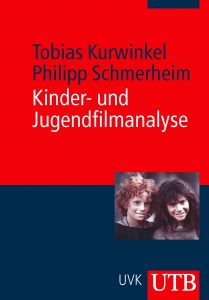- Children’s film analysis
 One of the main foci of my research in the area of children’s media is children’s film, in particular the developments of tools and methods of children’s film analysis. Film studies has already brought forward an impressive array of film-analytical methods, yet they have rarely been consciously adapted for the analysis of films specificallly aimed at children or young adults. In my publications and teaching, I want to provide a corrective counterweigh against the absence of the child spectator in contemporary film studies.
One of the main foci of my research in the area of children’s media is children’s film, in particular the developments of tools and methods of children’s film analysis. Film studies has already brought forward an impressive array of film-analytical methods, yet they have rarely been consciously adapted for the analysis of films specificallly aimed at children or young adults. In my publications and teaching, I want to provide a corrective counterweigh against the absence of the child spectator in contemporary film studies.
The book Kinder- und Jugendfilmanalyse, written together with Tobias Kurwinkel, is an introduction to children’s film research. It provides an overview of the definition, genres and history of films for children and young adults, with detours into topics such as adaptation, children’s television and family entertainment films. The second part of the book outlines methods and tools for children’s film analysis, based on a detailed examination of the peculiarities of children and young adults as film spectators. A chapter on writing film analyses provides students with guidelines for conducting their own systematic analysis of a film. In the third part of the book, case studies of The Hunger Games, Madita, Ratatouille, Tarzan 2 and Paranoid Park, all of which are written by other film scholars, exemplify our approach to film analysis. An extensive glossary and a commented bibliography at the end of each chapter adds to the use value of the book.
An online reading sample can be found here.
- Aurality
The centerpiece of our approach to children’s film analysis is the notion of aurality: We believe that, since pre-school and elementary-school children in particular have a high affinity to sound-related phenomena, an analysis of children’s films should pay particular attention to the way in which the sound dimension of a film interlocks with its visual and narrative dimension, often leading the way in which the film as a whole is perceived by its spectators. We have found that, consciously or not, children’s film makers tend to put a great emphasis on the auditive dimension of their films, not only by using a lot of music and songs, but also by rhythmicizing the correlation between camera, sound, character movement and montage in a way which suits the cognitive dispositions of their young audience. You can read more about the concept of aurality on KinderundJugendmedien.de and in the Lexikon der Filmbegriffe (both in German).
- The intermediality of children’s literature
In the context of various teaching and research projects, Tobias Kurwinkel and I have explored the way in which children’s literature is being adapted to the screen. These projects resulted in a number of edited volumes on the filmic adaptation of the works of Michael Ende, Astrid Lindgren, Otfried Preußler, and J.K. Rowling. You can find more information here.
